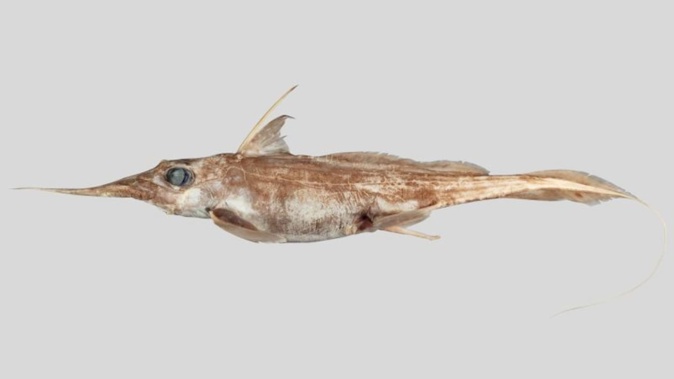
They’re called ghost sharks: strikingly coloured, yet rarely spotted creatures that love the cold, dark depths of the ocean.
Now, scientists report the waters of Australia and New Zealand are home to a distinct species of the mysterious animal — but it’s not known how many of them exist.
The new ghost shark — collected in the Chatham Rise off New Zealand’s coast during earlier surveys — was initially thought to be part of a globally distributed species, until research revealed it to be genetically and morphologically different from its cousins.
Formally named chimaeras — and otherwise nicknamed ratfish, rabbitfish and elephant fish — ghost sharks are closely related to sharks and rays, but appear more like cartilaginous fish.
They have smooth skin free of scales, and feed on crustaceans such as shrimp and molluscs with their distinctive beak-like teeth.
“They eat a lot of benthic organisms: anything that’s kind of crunchy and lives on the sea floor,” Niwa fisheries scientist Dr Brit Finucci said.
Their embryos also develop in egg capsules laid on the ocean floor, feeding off a yolk until they’re ready to hatch.
 Ghost shark embryos develop in egg capsules laid on the sea floor and feed off yolk until they are ready to hatch.
Ghost shark embryos develop in egg capsules laid on the sea floor and feed off yolk until they are ready to hatch.
Finucci said the species she described — the Australasian narrow-nosed spookfish — was set apart by its “incredibly long nose”.
“When they’re quite small, their snout length can be half the length of their body, so that’s quite an important feature for these guys,” she said.
“They’ve also got large eyes, which is quite common in a lot of deep-sea species, and these beautiful, large pectoral fins, which makes them glide in the water.”
In a touching tribute, Finucci gave the species the scientific name Harriotta avia, in memory of her grandmother.
“Avia means grandmother in Latin; I wanted to give this nod to her because she proudly supported me through my career as a scientist,” she said.
“Chimaeras are also rather ancient relatives — the grandmas and grandpas — of fish and I thought the name was well suited.”
Finucci said ghost sharks such as this one were confined largely to the ocean floor, living in depths of up to 2600m — meaning humans were unlikely to encounter them.
“Their habitat makes them hard to study and monitor, meaning we don’t know a lot about their biology or threat status, but it makes discoveries like this even more exciting.”
Although discovered in recent decades, it’s thought ghost sharks have been around for hundreds of millions of years.
Jamie Morton is a specialist in science and environmental reporting. He joined the Herald in 2011 and writes about everything from conservation and climate change to natural hazards and new technology.
Take your Radio, Podcasts and Music with you









